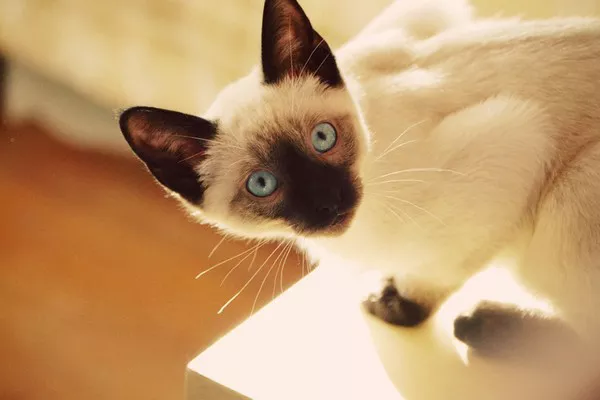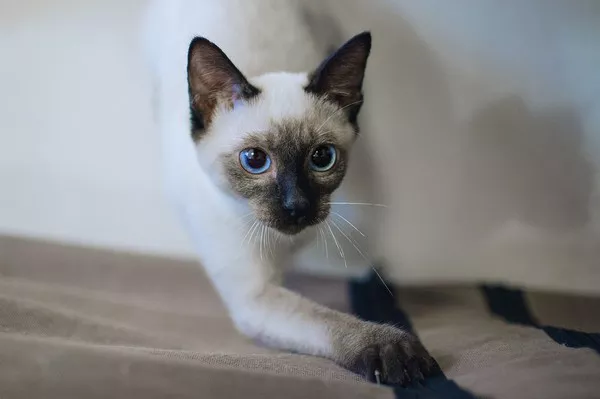The decision to breed your cat is an important one that involves careful consideration of various factors, including the age of your feline companion. Responsible breeding requires a thorough understanding of feline reproductive health and the well-being of both the mother and potential offspring. In this article, we will explore the optimal age for breeding your cat, considering the physical and behavioral aspects that influence this decision.
Feline Reproductive Maturity:
Cats, like many mammals, go through distinct stages of reproductive development. It’s essential to be familiar with these stages to make informed decisions about breeding. The key stages include:
Kittenhood:
The initial phase of a cat’s life is kittenhood, which generally spans from birth to around six months. During this time, kittens focus on growth, development, and learning essential behaviors from their mother and littermates.
Adolescence:
The adolescent stage begins around six months and continues until the cat reaches sexual maturity. This phase involves the development of sexual characteristics and behaviors.
Sexual Maturity:
Cats typically reach sexual maturity between six and nine months of age. This is the stage at which they become capable of reproduction.
Adulthood:
Adulthood in cats is generally considered to start around one year of age. At this point, cats have reached their full size and physical maturity.
Optimal Age for Breeding:
The optimal age for breeding your cat is influenced by various factors, including breed, individual health, and reproductive readiness. While cats may reach sexual maturity at a relatively young age, responsible breeding involves waiting until the cat is physically and emotionally prepared for the challenges of pregnancy and motherhood.
Physical Readiness:
Cats can technically become pregnant once they reach sexual maturity, but this doesn’t necessarily mean it’s the ideal time for breeding. Breeding too early, especially in the first heat cycle, can pose risks to the health of the mother and the kittens. Waiting until the cat is at least one year old allows for full physical development, reducing the likelihood of complications during pregnancy and birth.
Emotional Readiness:
Emotional readiness is a crucial aspect of successful breeding. Cats need to exhibit stable and nurturing behaviors to care for their kittens effectively. Breeding too early may result in a mother cat that is not emotionally prepared for the demands of raising a litter.
Breed Considerations:
Different cat breeds may mature at varying rates. Larger breeds, such as Maine Coons, may take longer to reach full maturity compared to smaller breeds. Consult with your veterinarian and breed-specific guidelines to determine the optimal age for breeding based on your cat’s breed.
Health Assessment:
Before considering breeding, conduct a thorough health assessment of your cat. Ensure she is free from genetic disorders and common health issues that could be passed on to the offspring. Regular veterinary check-ups and genetic testing can provide valuable insights.
Behavioral Changes:
Monitor your cat’s behavior for signs of readiness. Cats in heat exhibit certain behaviors, including increased vocalization, restlessness, and a distinctive posture. These signs can help you identify when your cat is entering a fertile period.
The First Heat Cycle:
The first heat cycle, or estrus, marks the onset of a cat’s reproductive ability. While it is possible for a cat to become pregnant during her first heat cycle, it is generally advisable to wait until subsequent cycles. The first heat cycle is often associated with immaturity, and the mother cat may not have the emotional or physical readiness for motherhood. It’s crucial to understand the signs of a cat in heat:
Vocalization:
Increased vocalization is a common sign of a cat in heat. She may yowl or meow more frequently, signaling her readiness to mate.
Restlessness:
A cat in heat may become more restless, pacing around the house and exhibiting signs of heightened energy.
Affectionate Behavior:
Cats in heat may become more affectionate, seeking attention and rubbing against people or objects.
Posture Changes:
The cat may assume a distinct posture, elevating her hindquarters and treading her hind legs as a response to being touched or approached.
Considerations for Delaying Breeding:
While waiting until your cat is at least one year old is generally advisable, there are situations where delaying breeding may be beneficial:
Ensuring Full Development:
Some breeds, especially larger ones, may continue to develop physically and emotionally beyond one year. Waiting until the cat has reached full maturity ensures a more robust and healthy breeding experience.
Health Considerations:
If your cat has experienced health issues or underwent medical treatments, it may be prudent to delay breeding until she has fully recovered and regained optimal health.
Genetic Testing:
If you plan to breed for specific traits or characteristics, genetic testing is crucial. Waiting until your cat is old enough to undergo thorough genetic testing can help you make informed breeding decisions.
The Role of Responsible Breeding:
Responsible breeding goes beyond choosing the right age for breeding. It involves careful consideration of various factors to contribute positively to the health and well-being of both the mother and the kittens. Key principles of responsible breeding include:
Genetic Health:
Ensure that your cat undergoes genetic testing to identify and mitigate the risk of passing on hereditary disorders to the offspring.
Health Screening:
Regular veterinary check-ups and health screenings are essential to detect and address any potential health issues in the mother cat.
Socialization:
Proper socialization of the kittens is crucial for their development. Provide a nurturing environment that encourages positive interactions and experiences.
Finding Suitable Homes:
Responsible breeders are committed to finding suitable and loving homes for their kittens. Screen potential adopters carefully to ensure the well-being of the kittens in their new homes.
Education:
Stay informed about feline health, breeding practices, and the responsibilities of cat ownership. Continuous education contributes to making informed decisions for the well-being of your cats.
Conclusion:
Breeding your cat is a significant responsibility that requires careful consideration of her age, health, and overall readiness for motherhood. While cats may reach sexual maturity at a young age, waiting until they are at least one year old ensures that they are physically and emotionally prepared for the demands of breeding. Responsible breeding involves a commitment to the health and well-being of both the mother and the kittens, contributing to the overall welfare of feline populations. Consulting with a veterinarian, staying informed about breed-specific considerations, and practicing responsible breeding principles create a foundation for a positive and ethical breeding experience.


























